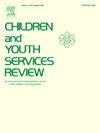Peer connectedness moderates the association of bullying victimisation with substance use among 135,881 in-school adolescents in 35 countries
IF 1.7
2区 社会学
Q1 FAMILY STUDIES
引用次数: 0
Abstract
Objective
To examine the association between bullying victimisation and substance use and the moderating effects of peer connectedness and parental connectedness/monitoring among in-school adolescents.
Methods
We used data from 135,881 adolescents who participated in cross-sectional nationally representative surveys conducted between 2015 and 2018 in 35 countries. The surveys were developed by the World Health Organisation (WHO), the Centres for Disease Control (CDC), and other United Nations allies, and country-specific institutions. To determine the association between bullying victimisation and substance use and the interaction impacts of peer connectedness and parental connectedness/monitoring, four-level hierarchical logistic regression models comprising unadjusted and multivariable analyses were fitted. Statistical significance was set at p < 0.05.
Results
The prevalence of bullying victimisation and substance use was 33.8 % (32.6 −35.1) and 12.5 % (11.5- 13.6), respectively. Bullying victimisation and substance use were more prevalent in males than in females. Multivariable results indicated that bullying victimisation was significantly associated with substance use (aOR = 1.56, CI = 1.34 – −1.82, p = 0.001). The association between bullying victimisation and substance use was significantly moderated by peer connectedness, but not parental connectedness and monitoring (aOR = 0.46, CI = 0.26–0.82, p = 0.008).
Conclusion
Our results may be helpful in informing future public health control policies and interventions, as well as strategies such as peer support programs and frameworks, and anti-bullying initiatives in schools to address bullying victimisation and substance use.
在35个国家的135881名在校青少年中,同伴联系缓和了欺凌受害与药物使用的关联
目的探讨在校青少年欺凌受害与物质使用的关系,以及同伴联系和父母联系/监控的调节作用。方法:我们使用了来自35个国家的135881名青少年的数据,这些青少年参加了2015年至2018年进行的全国代表性横断面调查。这些调查是由世界卫生组织(WHO)、美国疾病控制中心(CDC)、其他联合国盟友以及特定国家的机构共同开展的。为了确定欺凌受害与物质使用之间的关系,以及同伴联系和父母联系/监测的相互影响,拟合了包含未调整和多变量分析的四层次逻辑回归模型。p <; 0.05为统计学意义。结果欺凌受害发生率为33.8%(32.6% ~ 35.1%),物质使用发生率为12.5%(11.5% ~ 13.6%)。欺凌受害者和药物使用在男性中比在女性中更为普遍。多变量结果表明,欺凌受害与物质使用显著相关(aOR = 1.56, CI = 1.34 - 1.82, p = 0.001)。欺负受害者和物质使用之间的关系被同伴联系显著调节,但不被父母联系和监控调节(aOR = 0.46, CI = 0.26-0.82, p = 0.008)。结论我们的研究结果可能有助于为未来的公共卫生控制政策和干预措施提供信息,以及同伴支持计划和框架等策略,以及学校反欺凌举措,以解决欺凌受害者和物质使用问题。
本文章由计算机程序翻译,如有差异,请以英文原文为准。
求助全文
约1分钟内获得全文
求助全文
来源期刊

Children and Youth Services Review
Multiple-
CiteScore
6.30
自引率
6.10%
发文量
303
期刊介绍:
Children and Youth Services Review is an interdisciplinary forum for critical scholarship regarding service programs for children and youth. The journal will publish full-length articles, current research and policy notes, and book reviews.
 求助内容:
求助内容: 应助结果提醒方式:
应助结果提醒方式:


